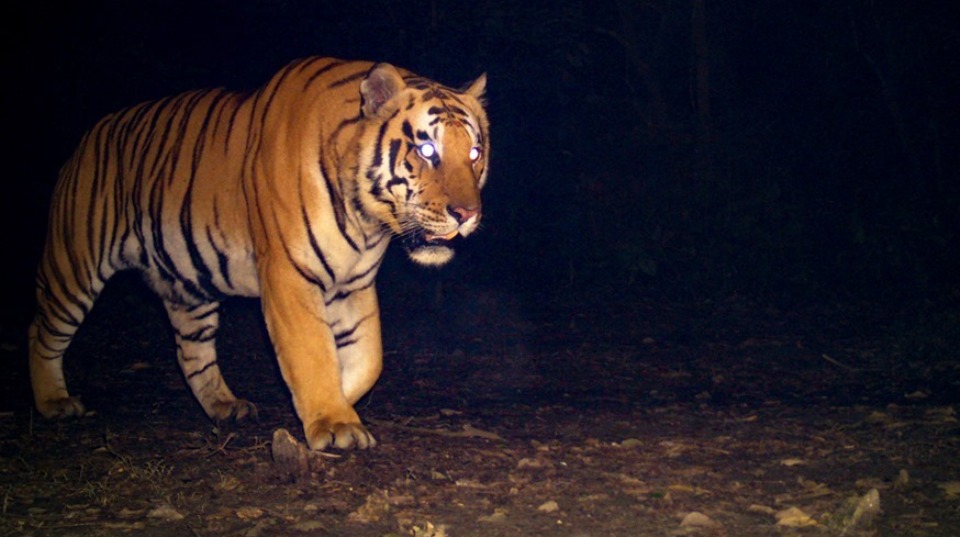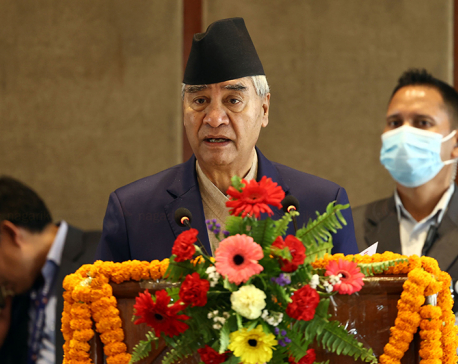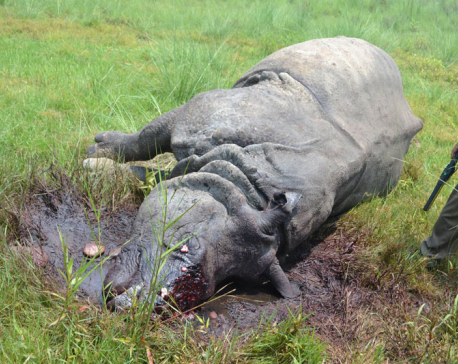
OR
Global Tiger Day 2020
When it comes to tiger conservation, we must consider the unexpected
Published On: July 29, 2020 12:20 PM NPT By: Dipesh Joshi

More from Author
This year’s Global Tiger Day comes at an extraordinary juncture in recent human history — one that has invoked a popular phrase to describe the upcoming future: ‘The New Normal.’ While this phrase adequately captures the need for behavioural change to curb the spread of the devastating global pandemic, it is also being propelled by media narratives to describe the climate crisis. Today presents a relevant opportunity to counter these narratives. Here’s why the phrase “New Normal” doesn’t apply to climate scientists and why it shouldn’t apply to policymakers — particularly those focusing on tiger conservation.
At its core “normal” implies a level of predictability — which is severely lacking in the climate crisis. All we have are projections. The ICIMOD's Hindu Kush Himalaya Assessment (2019) states that the climate of the region has changed significantly and is projected to change dramatically in the future. For Nepal, average annual precipitation and temperatures are likely to increase, leading to increased frequency and intensity of extreme climate events. Increasing climate variability is likely to result in prolonged dry spells as well as increased floods, flashfloods and longer periods of inundation, which are already having significant impact on nature and human communities. These extreme weather events — which are, by definition, abnormal — are nothing new to Nepal, where every monsoon cycle brings unparalleled levels of devastation to both humans, and even wildlife across the country.
While predictions from modelling can help map the general trajectories of how individual species will respond to climate change, the collective response of the overall ecosystem is unclear and largely uncertain. And above all, the impacts on human communities, and their resulting interactions with nature are unpredictable. Many faunal species are likely to move to higher elevations with lower temperatures in search of favourable habitats. The key challenge of such movements is that there will be increased interactions between wildlife and human communities in areas that are not adequately protected currently and where wildlife face greater threats. Increased wildlife-livestock contact could also promote the transfer of zoonotic diseases among wildlife, livestock, and people.
The reality of species shifting their habitats — likely in response to climate change and habitat loss — has already manifested in tiger conservation, and more recently, in Nepal. The recent discovery of Nepal’s first documented high-altitude tiger at 2500m in Dadeldhura is likely not an isolated incident; as previous studies have predicted, tigers could possibly be shifting their distribution further northwards as the south becomes inhabitable and the north becomes favorable.
While tigers are not considered ‘climate vulnerable,’ their prey and habitats are facing increasing climate-induced pressure. Grassland species, which largely comprise tiger prey, can be habitat specialists relying on open grasslands and floodplains. And these grasslands are dynamic systems that are highly sensitive to precipitation and moisture regimes and thus vulnerable due to prolonged drought, inundation and fires. This could cause population declines in herbivores, depriving tigers of food, forcing tigers out of core and protected areas in search of prey and resulting in increased human wildlife conflicts.
These predicted changes to Nepal’s ecological distribution will undoubtedly affect communities. In Nepal, thousands of people depend on forest products to sustain livelihoods. Changes in forest composition and species can disrupt these livelihoods, leading to a vicious cycle of resource conflict and degradation. Further, most of the existing tiger-bearing protected areas (Shuklaphanta, Banke, Bardia, Chitwan and Parsa) show an increasing annual precipitation trend (including a positive rainfall trend in upstream basins of Mahakali, Karnali and Gandaki) which can have devastating effects in the form of flooding and prolonged inundation of these protected areas.
Given these trends and their socio-ecological consequences, in the path ahead, we must integrate un/expected impacts into species action and protected area management plans. But we don’t have to start from scratch. The nature of climate impacts could also prompt strategic reconceptions of conventional conservation practices. For example, biological corridors are commonly used as a strategy to reconnect or establish new linkages between isolated habitat patches and to restore gene flow and improve connectivity. Studies suggest that the value of connectivity under climate change is less about compensating for habitat fragmentation, and more about facilitating climate-induced changes in species’ movements and distributions. Considering these aspects for corridors create a different purpose for corridors beyond mere mobility — possibly leading to different strategies for their design, identification, and restoration.
But while our solutions don’t have to be completely new, it is important they uproot themselves beyond established practices and landscapes. Maintaining and improving north-south connectivity by focusing on existing river corridors through the conservation of climate resistant forests, especially in climate refugia sites, is an urgent need for viable climate change-integrated conservation strategies for tigers in Nepal. The northern flanks of the Churia, which are identified to be resilient under a warming climate and the Mahabharat need additional focus for conservation. Conservation strategies should consider the integration of these larger patches of contiguous forests, especially to maintain connectivity between the core tiger habitats and potential climate refugia through existing and potential corridors.
Above all, we must congruently factor how climate change will significantly affect the guardians of conservation; the human communities and their livelihoods around tiger habitats and corridors. If we are to protect new core habitats, corridors and climate refugia, we need to protect their communities and their assets, involving them in conservation from the inception.
And as we look both north and south — in our case, literally — to scope out climate-smart interventions, we must have fall back plans. Since the 'uncertainties' are high under climate change, the conservation interventions should be adaptive and include ‘no-regrets’ strategies that will have co-benefits even if climate change trajectories do not unfold as predicted. In other words, we need to avoid establishing a “new normal” because in doing so we can ensure that our solutions maintain the greatest level of diversity and flexibility.
Climate change will significantly affect the guardians of conservation; the human communities and their livelihoods around tiger habitats and corridors. There is a need to put additional focus on these communities while planning for tiger conservation because the habitats could be shaped by how these communities interact and adapt to climate change impacts. And if we are to protect the core habitats, corridors and climate refugia, we need to protect the communities and their assets. In a situation where climate change projections, their impact on wildlife and their responses are uncertain, setting priorities for tiger conservation is challenging. The only means to tackle the unforeseen is to maintain the greatest diversity and flexibility — which, after all, are also the two factors that contribute to a resilient ecosystem.
A decade has passed since Nepal committed to TX2, the global goal to double tigers by 2022. And while we have undoubtedly made substantial progress, it is also important to adopt new modes and approaches, while taking into account the needs and rights of communities in these steps ahead. In this era of new challenges — including an uptick in forest-related crimes, the deprioritization of conservation in the national agenda, a global pandemic, and Nepal’s rapid infrastructural development — it is important that we act with more urgency. These are not normal times. Our situation demands a process of constant readpation and reinvention, one that factors inclusive and adaptive climate-smart solutions for both people and nature.
Dipesh Joshi is the Climate & Energy Goal Lead at WWF Nepal.
You May Like This

PM Deuba stresses on the need to protect habitats of tigers
KATHMANDU, July 29: Prime Minister Sher Bahadur Deuba has said that the tiger, which is a unique and rare wild... Read More...

Who is to blame for these casualties?
Vehicles have been lazily stopped in a line at the Amlekhgunj-Pathlaiya road section inside Parsa National Park. At the end... Read More...

22 rhinos die in Chitwan National Park in past nine months
CHITWAN, March 19: As many as 22 rhinos died due to natural reasons in Chitwan National Park in the past... Read More...


Just In
- 70 community and national forests affected by fire in Parbat till Wednesday
- NEPSE loses 3.24 points, while daily turnover inclines to Rs 2.36 billion
- Pak Embassy awards scholarships to 180 Nepali students
- President Paudel approves mobilization of army personnel for by-elections security
- Bhajang and Ilam by-elections: 69 polling stations classified as ‘highly sensitive’
- Karnali CM Kandel secures vote of confidence
- National Youth Scientists Conference to be organized in Surkhet
- Rautahat traders call for extended night market hours amid summer heat


















Leave A Comment